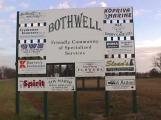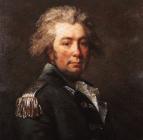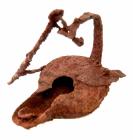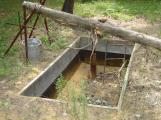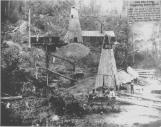2
Bothwell may only be a quant little town of a thousand nowadays but, believe it or not, in the 1860's it was a thriving boom town of eight thousand. Bothwell owes its success in those years mainly to the discovery of oil in the area.4
Bothwell was founded by the Honourable George Brown, who is most well known for being a Father of Confederation. Seeing it as a good investment, he bought four thousand acres of Zone Township. The Great Western Railway, which opened in 1854, ran through the middle of Brown's four thousand acres. Brown saw the railway as a good business opportunity and he surveyed then cleared the land and sold it to the railway. He then sold the lots, and set to work constructing saw mills and a furniture factory.6
One of the early businesses in Bothwell was the tavern, established by Boniface Brown. Brown named his tavern "The Sebastopol" and at times its 18 x 20 foot dimensions were not large enough to cater to the rush of customers. By 1857 there were four other taverns aiding the hungry and thirsty. The first store in Bothwell was established in 1856 by Campbell and McNab.7
Bothwell sank into a deep depression in the late 1850's due partly to the scarcity of ready cash. The main method of payment during those times came in the form of I.O.U's.9
It was not the first time oil had been discovered in Bothwell when American John M. Lick "discovered" it on April 1, 1863.The Delaware Native Christians who arrived in the area in 1792 to settle with their Moravian Missonaries discovered the oil flowing from springs in the low bank of the Thames River near their village of Fairfield.
In the next year, 1793, Governor John Graves Simcoe was going to Detroit on the Thames River and while staying at Fairfield the Natives accompanying him discovered a spring of petroleum as well.
11
The Delaware were the first to see the commercial possibilities of oil. In 1844 they sold it at three dollars a gallon. The procedure to collect the fluid was simple. The oil and water that discharged through a spring was scooped into kettles and the water boiled out. Preserved, it was useful for internal medicine or was applied externally (it did not sting) for sprains, rheumatic pains, toothache, or headache.The oil was mostly used for burning in small, shallow, enclosed iron receptacles, called "Betty lamps". The wicks, immersed in oil or fat, hung out into small spouts at the sides, sometimes only one to a lamp. The whole affair could be suspended by a hook and chain from a beam, fireplace, or high-backed, straight chair, its glow directed to various angles. Because of the extremely unpleasant odour, much stronger than the light it provided, the lamps were not hung, as a rule, in close proximity to human noses.
